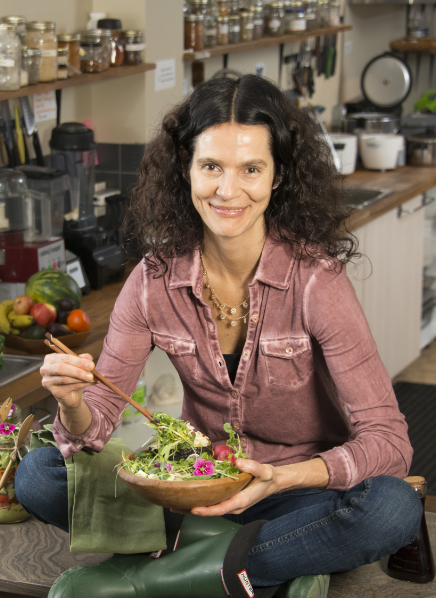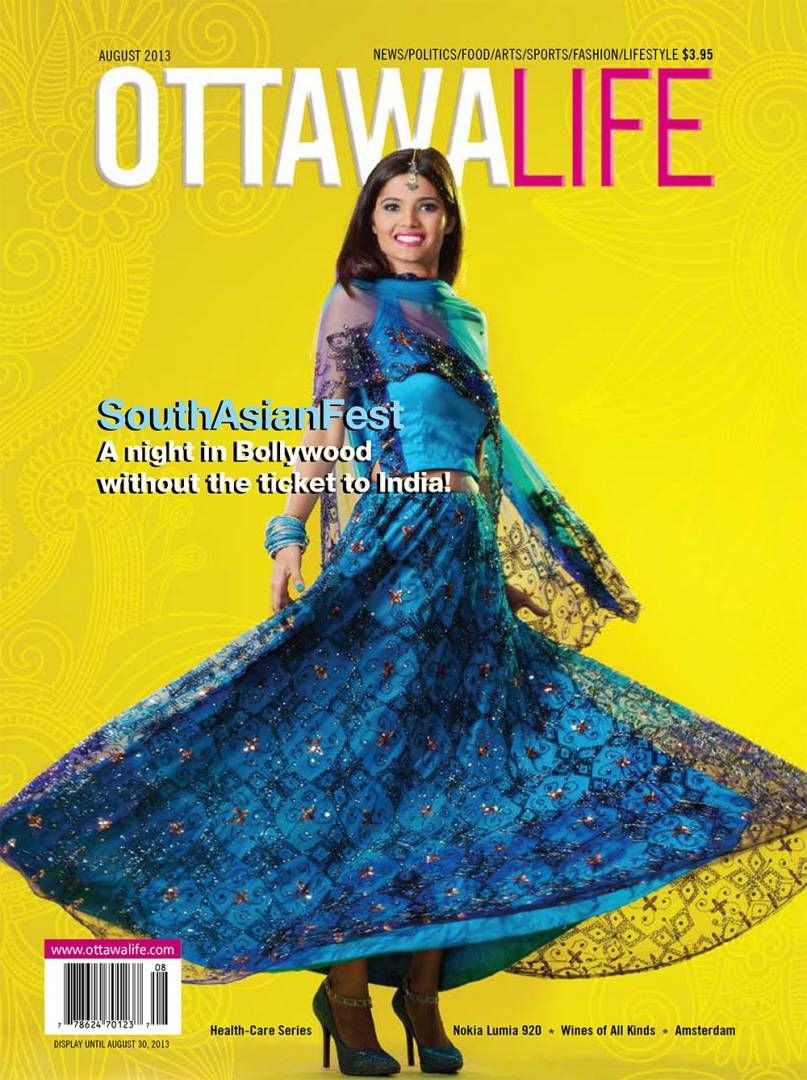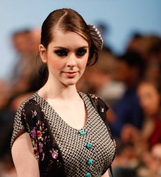
Two Canadian Fashion Designers with a Green Vision
The fashion industry is a lot of things – glamorous, ever-changing, and certainly big business. However, in terms of being environmentally conscious, many argue the industry needs to clean up its act. From the fast trend cycle, which promotes disposable clothing, to the wasteful and harmful practices during production, we evidently have a long way to go.
Fortunately, some forward-thinking Canadian designers are paving the way for a more sustainable future. Adhesif Clothing Company’s designer Melissa Ferreira uses sustainable materials in her collection, and produces everything locally in Vancouver. Even better, she looks forward to designing all of her future collections from recycled materials! We totally fell in love with Adhesif’s candy-inspired 2012 spring/summer collection.
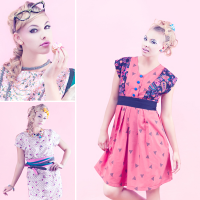
Sonja den Elzen’s eco-collection, Thieves, uses organic and sustainable fabrics. The Toronto-based designer combines her love of high-end fashion with her passion to seek materials and construction methods which are more respectful of the environment. The result – total haute eco-ture!
Ottawa Life Magazine was excited to chat with both Melissa Ferreira and Sonja den Elzen, to find out exactly how they’re making the fashion industry more sustainable.
Ottawa Life Magazine: So many things are labelled “sustainable” or “eco-friendly.” How exactly do you put those labels into practice?
Melissa: All of the garments produced under the Adhesif Clothing label are not only locally handmade in Vancouver, but also made with up to 98% reclaimed materials. It really doesn’t get more sustainable than that!
Sonja: With Thieves, I source sustainable textiles – ones that are considered less harmful to the environment than what is often readily available. Fabrics like hemp that don’t require pesticides; Tencel, which is produced in a closed-loop cycle with less toxic chemicals then most rayon type jerseys; organic cotton, which is grown and processed without pesticides and toxins; fabrics with low-impact dyes or natural dyes, and organic wools which are processed in ways that are animal and earth kind. I also like to use local manufacturers. This helps keep our own community diverse and strong, and keeps jobs and money within our own community. I am also able have regular contact with them and know that they are working in pleasant environments and treated fairly. I like to work with people directly so that there is a sense of connection and community.
Ottawa Life Magazine: A common perception is that environmentalists are fashion-challenged, granola-crunching, wearers of hemp skirts and Birkenstocks. Is it possible to be eco-friendly and fashion-forward at the same time?
Melissa: When I started Adhesif Clothing 9 years ago, there really wasn’t all that much available in terms of sustainable fashion. Today, there are dozens of brands that have some kind of “eco-edge” to them. Some of my personal favourite eco-designers include Cokluch from Montreal, Vancouver’s Nicole Bridger and Elroy Apparel. Larger companies like H&M are even trying to follow suit with what they offer in terms of sustainable materials. It’s all quite relative I suppose. It just depends on what an individual is into. If environmentalists are being viewed as fashion-challenged, then I guess they just need to pay a visit to our shop for some free fashion styling advice!
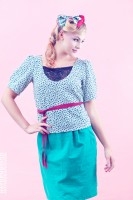
Sonja: I think at this point our world is so dynamic that environmentalists come from many different style groups, and are more linked by their deeper sense of connection to the planet that sustains us than to a specific outside clothing style. It is definitely possible to be eco-friendly and fashion-forward, as it is a matter of how one applies their design aesthetic to the textiles they choose to use. All designers can be eco-friendly if they choose to be, and still maintain the aesthetic they choose to convey to the world – sometimes it just takes a little more creativity and intention.
Ottawa Life Magazine: What practices frustrated you in the fashion industry, before inspiring you to create more sustainable garments?
Melissa: On a grand scale, the fashion industry is still one of the most wasteful industries. Although cutting and creating a garment line from giant rolls of fabric is more time and cost effective, it is also a very wasteful process. I would like more light to be shed on the designers such as myself, who are not only creatively resourceful but also strive to literally reduce waste in the environment. I would like larger companies to take responsibility for their actions by figuring out a strategy for reducing the waste they create from mass production.
Sonja: I am definitely frustrated by the unnecessary waste and toxins used in textile and manufacturing processes, as well as the abuse of human labour and un-holistic treatment of people and the environment.
Ottawa Life Magazine: What are some of the challenges in producing garments that are more sustainable?
Melissa: Speaking as a designer who creates garments made primarily from reclaimed materials, it is definitely more time consuming and thus more costly to produce. All materials must be handpicked, cleaned, and in most cases deconstructed before used in the creation of the garments. The pieces can’t be mass produced or else they lose their charm in terms of having a “thought process” or a “soul”. Needless to say, educating the public/consumers on the cost differences between something mass produced overseas and something locally handmade is the way to overcome obstacles.
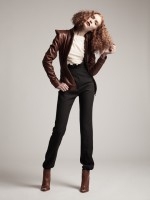
Sonja: Some of the challenges are finding textiles that are affordable and interesting, and overcoming people’s experiences of cheap clothing, towards understanding the “true value” of clothing made (where everyone is paid fairly and fabric is processed with environmental concern).
Ottawa Life Magazine: Is eco-fashion a niche market, and if so, do you think it will become more mainstream?
Melissa: When I hear “niche market” I think of anything that is a specialty item. I think it just depends on who your market is. With that said, I think style is subjective and that’s part of what makes fashion so interesting. Regardless, I see eco-fashion as becoming more and more prominent. I’m seeing more and more designers popping up who are using some form of sustainable or reclaimed materials for production of their garments. Many products are being offered with greener options, like post-consumer waste in paper goods and building supplies, as well as biodegradable plastics, as an example.
Sonja: It will become mainstream as we become more aware of our connection to the earth and learn to be respectful of our resources and learn to place a higher value on this then a piece of paper with a dollar sign on it.
Find out more about Adhesif Clothing Company (www.adhesifclothing.com), and Thieves (www.thieves.ca).


